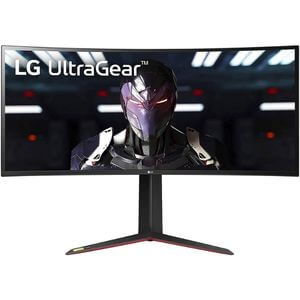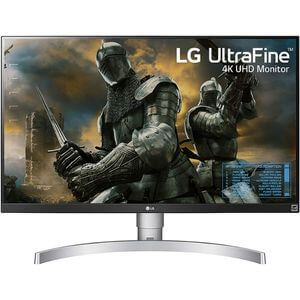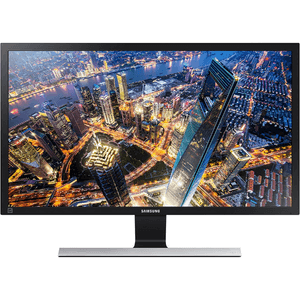Selecting the best 4K monitor for your video editing needs will require you to ensure that it delivers picture-perfect resolutions for your work to appear realistic. In order to get excellent color reproduction and brightness, you need to look for an IPS (in-plane shifting) screen instead of a TN (twisted nematic) display, so we’ll focus on that here.
Our focus is also on 4K screens; just for movie editing, 8K displays are prohibitively expensive and overkill. To learn about the right monitor for you, either as a hobbyist or as an expert, keep reading.
In summary, the best 4K monitors allow you to get the most out of Ultra HD networking, as well as make Ultra HD. You may require a 4K monitor for example if you need to observe your project at a distance.
Having a 4K monitor ensures that Photographers can see their photographs in a much higher quality compared to a 1080p screen, even though digital cameras take resolutions much higher than 3840 x 2160. In addition to 4K displays, there are also some that are calibrated, so you can precisely identify the colors on them.
List of 10 Best Monitor for Photo Editing and Gaming
Here is the list of the top best monitors for photo editing and gaming. We create the list of monitors after using them And every product fulfills the needs of a professional, so, if you want a quality product then read our review.
| IMAGE | PRODUCT | DETAILS | CHECK PRICE |
|---|---|---|---|
 | SAMSUNG Odyssey Neo G9 | Screen Size: 49 Inches Response Time: 1ms Resolution: (5120 × 1440) pixels | |
 | Acer Predator XB321HK | Screen Size: 32 Inches Response Time: 4ms Resolution: (3840 × 2160) pixels | |
 | Acer Nitro XV272U | Screen Size: 27 Inches Response Time: 1ms Resolution: (2560 × 1440) pixels | |
 | Dell Inspiron 7700 | Screen Size: 27 Inches Response Time: 1ms Resolution: (1920 × 1080) pixels | |
 | LG 34GN850-B | Screen Size: 34 Inches Response Time: 1ms Resolution: (3440 × 1440) pixels | |
 | Acer Predator XB271HU | Screen Size: 27 Inches Response Time: 4ms Resolution: (2560 × 1440) pixels | |
 | LG 34GP83A-B | Screen Size: 34 Inches Response Time: 1ms Resolution: (3440 × 1440) pixels | |
 | LG 27UK650-W | Screen Size: 27 Inches Response Time: 5ms Resolution: (3840 × 2160) pixels | |
 | Dell S2721QS | Screen Size: 27 Inches Response Time: 4ms Resolution: (3840 × 2160) pixels | |
 | SAMSUNG U28E590D | Screen Size: 28 Inches Response Time: 4ms Resolution: (3840 × 2160) pixels |
1. SAMSUNG Odyssey Neo G9 – Best Widescreen Monitor for Photo Editing

Samsung Odyssey Neo G9 has a 49-inch screen and a Mini LED backlighting for greater brightness and more control over local dimming. It’s a 49″ super ultrawide screen and has a 32:9 aspect ratio.
We haven’t seen any LED-backlit monitor with better local dimming, as it rivals monitors in terms of deep black display. Since it’s a gaming monitor, it has a high 240Hz refresh rate with native support for FreeSync variable refresh rate (VRR) technology and G-SYNC compatibility to reduce screen tearing.
Additionally, it’s future-proof because it features HDMI 2.1 inputs, so you’ll be able to use the next-generation consoles and graphics cards. The SDR display delivers stunning image quality, but HDR suffers from drawbacks, as some content looks awful in HDR. As a result, HDR content looks over-bright and has bad tone mapping, so watching HDR content can be really distracting.
Those who are creating content will appreciate the Samsung Neo G9. Having a super ultra-wide screen gives you enough room to see all of your work at once without scrolling. The display offers extensive coverage of Adobe RGB color space with an SDR color gamut.
Especially if you work in an area that’s well-lit, it has excellent brightness and decent reflection handling. Unfortunately, it doesn’t have wide viewing angles, which makes it difficult to share your screen with your colleague. But, its aggressive curve makes photo editing much easier.
2. Acer Predator XB321HK – Best 4K Monitor for Photo Editing and Gaming

There are some products that catch your attention. An example of this is the Acer Predator XB321HK, which benefits from a sleek design, as well as plenty of horsepowers.
This product is specially designed for professional graphic designers and gamers. In addition to gaming, photo editing, or office work, you can use it for any type of screen-based activity.
The G-Sync technology keeps your frame rate smooth and crisp. Having experienced the joys of three-dimensional games at 3840 x 2160 resolutions, there is no going back. If you’re looking for a high-end and 32-inch monitor. Then Acer Predator XB321HK is the best choice for you.
A pair of 2W speakers with DTS Sound are built-in to the XB321HK. The speakers aren’t that loud, but they can still reach a decent volume. Due to its IPS panel, this screen does not have the viewing angle problems associated with TN screens.
3. Acer Nitro XV272U KVbmiiprzx – Best 27-Inch Monitor for Photo Editing and Gaming

This Acer Nitro XV272U KVbmiiprzx monitor is a great choice if you are on a budget and need a monitor for photo editing and gaming. Compared with the Dell S2722QC, you have to make some trade-offs to reduce the price. In this case, you get a lower resolution of 1440p.
The lack of sharpness means text won’t appear as clear, but this monitor is still an excellent choice for content creators despite its budget price. The camera has an accurate sRGB picture mode, with colors that aren’t overly saturated and around perfect white balance out of the box.
With its remarkable gradient handling, you won’t see any banding when editing HDR videos, and it shows a wide range of colors in HDR. You can also easily adjust the display with this monitor’s 360-degree swivel range, so it’s a great choice if you frequently need to move the screen to share with colleagues or clients.
Gamers will love the Acer Nitro XV272U. The gaming experience is smooth and responsive because of its outstanding input lag, high refresh rate, and fast response times. FreeSync is supported, as is G-SYNC.
Because it is ergonomically designed, it is easy to place the screen at a comfortable viewing angle. The low contrast ratio makes blacks in dark room look gray when viewed in a dark room.
4. Dell Inspiron 7700 – Best Dell Monitor for Photo and Video Editing

Users prefer AIOs due to their kind of features, whether they are casual or professional users. It shouldn’t be necessary to consider whether you ought to consider purchasing an Inspiron 7700 when one like this is available.
The broad, bright display, in this case, boasts an Intel Core i7 processor, 12 GB of RAM, the latest connectivity, and many other useful features. In addition, we are reviewing the touchscreen version.
In order for an AIO to set itself apart from a similar configuration tower, it must have a striking design, and the Dell 7700 does not disappoint. This stand looks great and makes the unit stable. It also takes up very little floor space.
Despite its attractive looks, the Inspiron 7700 is certainly more than just a pretty look. Featuring a 4-core and 8-thread Core i7-1165G7 processor, this model boasts 4 cores and 8 threads.
In short, this is an ultra-low-power version, so obviously it doesn’t have the spec like most Core i7 which tend to have eight cores. Because of the maximum clock speed of 4.7 GHz, daily usage is easy. Additionally, The Dell Inspiron 7700 comes with three different options for a stand, so you can choose whichever suits your needs.
5. LG 34GN850-B – Best Computer Monitor for Gaming and Photo Editing

This LG 34GN850-B monitor is excellent gaming and photo editing monitor that has strong picture quality. This monitor’s 34-inch screen has a 1440p resolution, allowing you to play games and keep tabs on productivity tasks with a large amount of screen real estate.
With the slight curve of the screen and a bright enough display, you can use it even in somewhat dim environments. As a result of its rapid response time and high refresh rate, this monitor provides clear images with minimal motion blur. Additionally, it has G-SYNC compatibility and native FreeSync support.
Due to its low contrast ratio, it doesn’t do particularly well in dark environments, and it lacks a local dimming feature as well. Besides supporting HDR, it has an outstanding sRGB mode that produces highly accurate colors.
Content creators will benefit from the LG 34GN850-B. Having multiple windows open at once on this screen is fairly easy due to its ultrawide format and large screen size. This color space is covered very well by gray uniformity, gradient handling, and color uniformity. Sadly, it cannot be swiveled to portrait mode, and it does have a bit of backlight bleed. However, this varies from unit to unit.
6. Acer Predator XB271HU – Best Monitor for Photo Editing and Graphic Design

Featuring a generous viewing angle, a fast refresh rate, and a low input lag, the Acer Predator XB271HU Bmiprz is an excellent 1440p monitor. It is easy to adjust the stand so that it’s in an ideal viewing position, or you can turn the screen to share it with someone else.
This is an excellent gaming and photo editing monitor in general, but the response time is slightly slower than most similar models. In a dark room, IPS monitors have a low contrast ratio, so blacks appear gray, but this is to be expected when using IPS screens.
Acer Predator XB271HU is specially designed for heavy load work like graphic designing and gaming. With its 144Hz refresh rate, G-SYNC support, and excellent low input lag, the Acer Predator XB271HU provides excellent performance for gaming and as well as graphic designing.
Due to the low contrast ratio and lack of black uniformity, it results in only average image quality, which is mostly of concern in darker viewing environments. But on the other hand, this product offers the best amount of screen real-estate for productivity. With its complete articulation, the stand of the Acer Predator XB271HU allows it to be adjusted to a comfortable angle.
7. LG 34GP83A-B – Best Monitor for Both Gaming and Photo Editing

This LG 34GP83A-B gaming and photo editing monitor is a great option. A large, curved screen allows for amazing immersion while gaming and a ton of workspace when working. The monitor has a fast response rate and a low input lag, and its 144Hz refresh rate can be overclocked to deliver smoother and more responsive gameplay than ever.
There’s not much of a difference in viewing angles when playing co-op games or casually sharing content. However, if you need to share sensitive work, the side-viewing might not be optimal. It doesn’t get bright enough to provide complete HDR, despite being bright enough to overcome glare.
Blacks look gray in the dark because of the low contrast ratio. Among the positives, content creators will appreciate that it is fully sRGB compliant and has excellent Adobe RGB coverage. It also features excellent gradient handling and does not bleed color.
Gaming on this monitor is virtually tear-free, thanks to the support for FreeSync and G-SYNC. Because of its large, high-resolution screen, you can easily immerse yourself in atmospheric games like role-playing games.
8. LG 27UK650-W – Best Monitor for Photo Editing Under $500

LG 27UK650-W is a very good 27 inches, 4K IPS monitor that features excellent SDR peak brightness and a very low input lag for gaming. The monitor has a great resolution with excellent color accuracy as well as a wide viewing angle, so it can display every little detail clearly.
While the monitor supports HDR, it cannot display a wide color gamut, so it doesn’t add much value. In low-light settings, the monitor responds well to glare, but in dark rooms, the black appears gray.
Moreover, the 27UK650-W is also a highly suitable monitor for office use. You can multitask easily on the 27-inch screen, which includes a 4K resolution. When viewed from the side, the image will appear accurate because it has a wide viewing angle.
However, the monitor has disappointing ergonomics, and adjusting it to the side will require you to move the entire screen. But its input lag is very low, and its response time is fast. To reduce tearing in games, it has FreeSync variable refresh rate technology
9. Dell S2721QS – Best Budget Monitor for Photo Editing

The viewing angles of this monitor are stunning. 3840 x 2160 resolution and a 3 sided ultra-thin bezel design give you the clarity and fine detail you’re used to in a 4K monitor while supporting HDR content playback for a more lifelike viewing experience.
It’s a pretty monitor with a stylish design. This monitor has its own unique look thanks to a modern, elegant design and subtle texture at the back. Each room is filled with a feeling of harmony and quality that is a perfect blend of style and quality.
You can enhance your gaming experience while playing games on Dell S2721QS because this monitor is specially designed for professional gamers and graphic designers. You can play games smooth and tear-free with AMD FreeSync technology. Due to its best color accuracy, it can be used by a good graphic designer.
With height-adjustable stand, tilt, swivel, and pivot capabilities, you’ll be comfortable all day long. If you want the best budget monitor for photo editing, then Dell S2721QS is the best option for you. Because it’s not an expensive monitor for your work.
10. SAMSUNG U28E590D – Best Monitor for Photo Editing and Video Editing

Having a resolution of 4K and a larger than average screen size, the Samsung U28E590D 28-inch monitor offers good usable space. It has a TN LCD. Because of the low viewing angle and the poor picture quality, it is difficult to have a uniform picture.
In addition, it lacks support for wider color gamuts and HDR, as well as an inadequate stand. With its low input lag and low motion blur, the Samsung U28E590D does well with video games.
While its poor picture quality greatly inhibits immersion, and it lacks more advanced features like G-Sync and high refresh rates, it nevertheless performs well nonetheless. The higher 4k resolution, however, is quite pleasant.
Office users can use the Samsung U28E590D without a problem. In a team-oriented environment, as it is less intuitive to share your screen with neighbors, its high resolution may help to boost productivity; however, its very narrow viewing angles and poor ergonomics reduce its performance.
How to Select Best Monitor for Photo Editing and Gaming – Buying Guide
When selecting the perfect monitor for photo editing and gaming, you should consider a number of different things that you wouldn’t consider when choosing the best monitor for general use. To help you better understand what you should look for when choosing the right monitor for photographers and gamers, we have broken down most of the variables.
Resolution and Size
In other words, higher resolution means more megapixels on screen. As a result, images become clearer and sharper, allowing for more detailed and precise editing. There is no doubt that higher resolution is better, especially when it comes to the quality of the images (or videos), but you still have to consider your budget when making such decisions.
Not every display offers the best editing capabilities, even they offer very high resolutions. The advantage of larger resolutions is fundamental, but the effects that a larger resolution may have on you as a photographer may not be that profound.
Photographers and gamers often need ultra-wide screens, especially if you often work on multiple tasks at once, including photos and games that are meant to be enlarged. But when it comes to editing images on curved screens, you have to be careful. When it comes to gaming or watching movies, curved monitors are some of the best photo editing monitors, but their images can sometimes be distorted.
Panel Type
The three most common types of monitors today are Twisted Nematic (TN), Vertical Alignment (VA), and In-Plane Switching (IPS). The only thing you must consider when choosing your photo editing and gaming monitor is the IPS display panel. These monitors reproduce color well, so they’re the best. It is important to focus on this benchmark if you wish to create nuanced and vibrant photos.
The downside of IPS is that IPS panels usually perform poorly at refresh rates as compared to TN alternatives. Gamers will certainly find this to be a big deal because it determines how smoothly they can move.
This amount will almost entirely be irrelevant to most photographers or editors. They are between TN and IPS monitors. VA monitors are better at reproducing colors than TN monitors but perform at a slower refresh rate than IPS displays.
Screen Uniformity
Screens of different types can have widely varying viewing angles. A screen should produce the same results regardless of which angle you view it from, so you can edit photos or play games consistently.
Screen uniformity is a term that relates to IPS panels, and for that reason, they remain the standard. The fine details of an IPS display can be seen from 178 degrees, vertically as well as horizontally, with no degradation of the image, contrast, or color.
However, natively displayed images have some flaws even on the best displays. The center of the screen is always brighter. You should purchase a monitor that offers color uniformity compensation for this reason.
This will ensure the best possible level of brightness uniformity over the entire screen surface by automatically adjusting the brightness. IPS panels boast a largely uniform native appearance, however, the quality of the integrated features can differ significantly.
